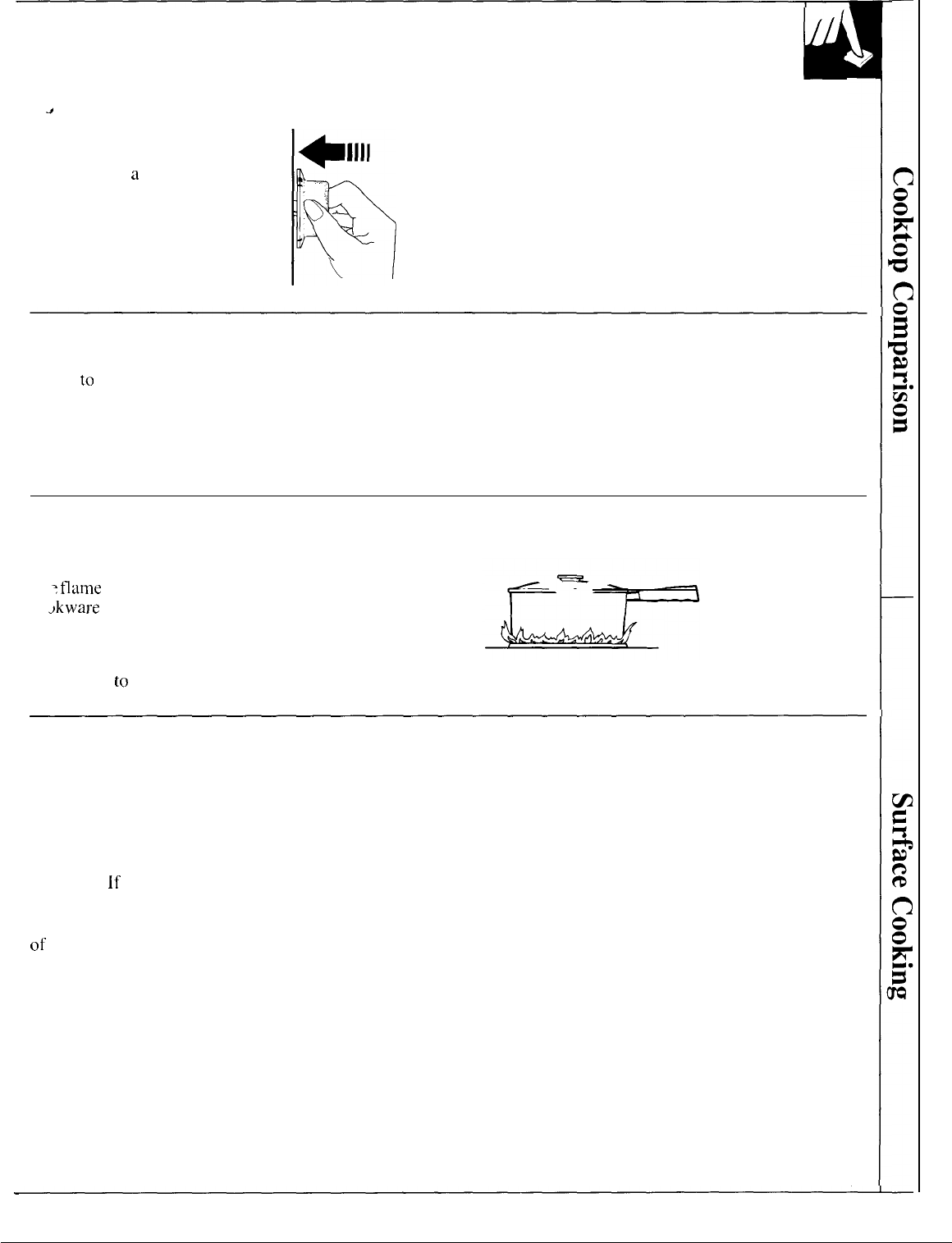
~
Light a Surface Burner
Push the control knob in and turn
it counterclockwise to LITE.
You will hear
a
little “clicking”
+
noise—the sound of the electric
~
:,
spark igniting the burner.
IR
1111
\
After the burner ignites, turn the knob to adjust
the flame size.
After Lighting a Burner
Check
to
be sure the burner you turned on is the one
Be sure the burners and grates are cool before you
you want to use.
place your hand, a pot holder, cleaning cloths or other
Do not operate a burner for an extended period of
materials on them.
time without cookware on the grate. The finish on the
grate may chip without cookware to absorb the heat.
How to Select Flame Size
Watch the flame, not the knob, as you reduce heat.
;
flame
size on a gas burner should match the
Jkware
you are using. FOR SAFE HANDLING OF
COOKWARE, NEVER LET THE FLAME EXTEND
UP THE SIDES OF THE COOKWARE. Any flame
larger than the bottom of the
cookware is wasted and
only serves
to
heat the handle.
Top-of-Range Cookware
Aluminum: Medium-weight cookware is
recommended because it heats quickly and evenly.
Most foods brown evenly in an aluminum skillet.
Use saucepans with tight-fitting lids for cooking with
minimum amounts of water.
Cast
Iron:
lf
heated slowly, most skillets will give
satisfactory results.
Enamelware: Under some conditions, the enamel
of some cookware may melt. Follow cookware
manufacturer’s recommendations for cooking methods.
Heatproof Glass Ceramic:
Can be used for either
surface or oven cooking. It conducts heat very slowly
and cools very slowly. Check cookware manufacturer’s
directions to be sure it can be used on gas ranges.
Stainless Steel:
This metal alone has poor
heating properties, and is usually combined with
copper, aluminum or other metals for improved heat
distribution. Combination metal skillets usually work
satisfactorily if they are used with medium heat as the
manufacturer recommends.
Glass:
There are two types of glass cookware—those
for oven use only and those for top-of-range cooking
(saucepans, coffee and teapots). Glass conducts heat
very slowly.
9


















